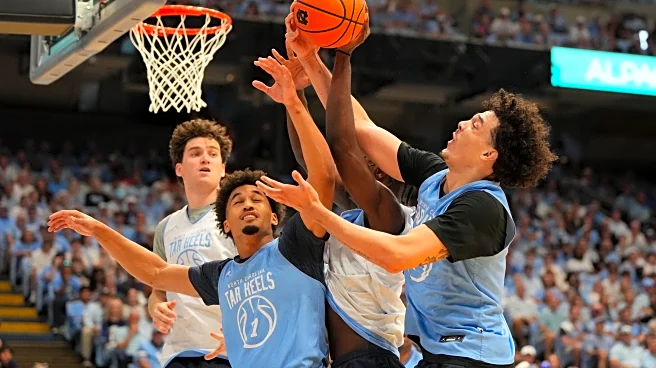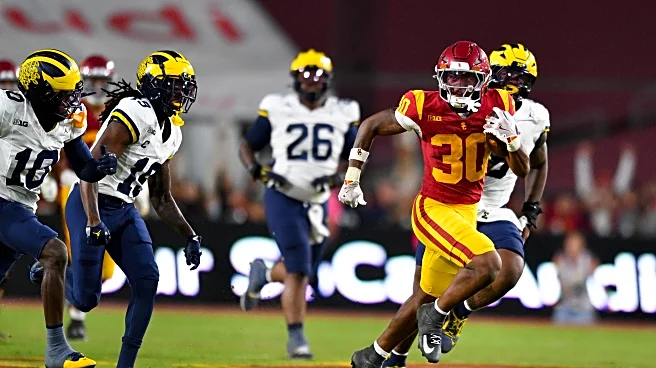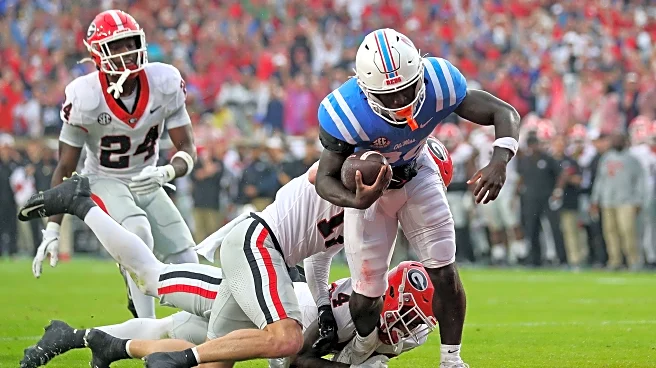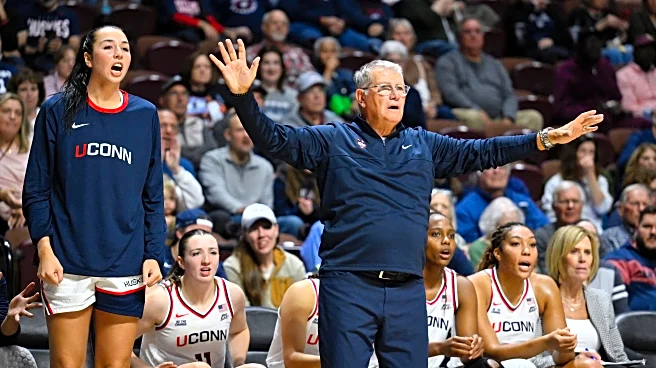What's Happening?
The NCAA Women's College Volleyball Bracketology has been released, outlining predictions for the 2025 NCAA tournament. Nebraska, with a perfect 16-0 record and 10 top-50 RPI wins, is positioned as the No.
1 overall seed. Texas follows as the nation's only other unbeaten team, securing the No. 2 overall seed. The ACC teams, Pitt and Louisville, complete the top line, with their upcoming matches expected to influence the final seedings. The bracket includes 31 automatic bids and 33 at-large teams, with the top four teams in each region hosting the first and second rounds. The Final Four is scheduled to take place in Kansas City, Missouri, on December 18, with the finals on December 21.
Why It's Important?
This bracketology is significant as it sets the stage for the NCAA Women's Volleyball tournament, highlighting the competitive landscape and potential matchups. The seeding decisions impact team strategies and preparations, influencing their chances of advancing in the tournament. The inclusion of teams from various conferences, such as the Big Ten, Big 12, ACC, SEC, and Big East, underscores the diverse representation and competitive nature of collegiate volleyball. The tournament outcomes can affect team rankings, player recognition, and future recruitment opportunities.
What's Next?
As the tournament approaches, teams will focus on securing their positions and improving their rankings through upcoming matches. Key games, such as the Pitt vs. Louisville clash, will be pivotal in determining final seedings. Teams on the bubble, like Georgia Tech and Auburn, will aim to enhance their records to secure a spot in the tournament. The NCAA volleyball committee will finalize the bracket on November 30, revealing the field of 64 teams and setting the stage for the competition.
Beyond the Headlines
The bracketology reflects broader trends in collegiate sports, including the growing prominence of women's volleyball and its impact on athletic programs. The tournament provides a platform for showcasing talent and fostering sportsmanship, contributing to the development of women's sports. Additionally, the geographic and competitive balance in the bracket highlights efforts to ensure fair play and equal opportunities for all participating teams.













